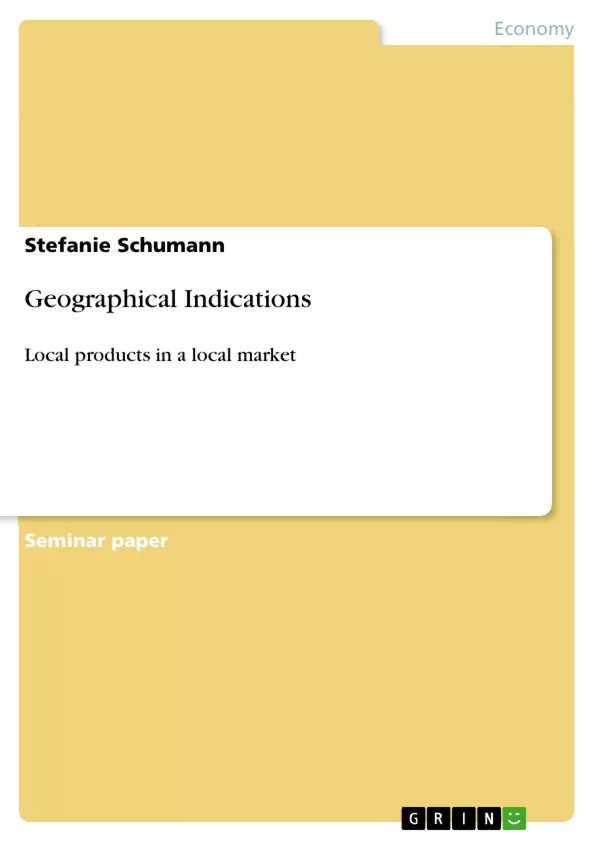Within the last decade the food industry experienced a great quality turn away from industrially produced agricultural to alternative goods labelled for example fair trade or organic farming. Geographical Indication (GI) is also one of those alternative food designations. There are various terms meeting the meaning of GI. The Spanish wine Rioja is designated with the label Denominación the Origen Controlada (DOC); the Italian cheese Parmigiono Reggiano is marked with a Protected Designation of Origin (PDO) and the Mexican spirit Tequila is considered as an Appellation of Origen (AO). In this paper I am going to use Geographical Indication as generic term, since the others refer to particular protection systems of different countries. Defining the features of GIs in general, I am going to examine their functions and benefits. Comparing the use of Geographical Indications in Mexico and Germany I want to analyse, if GI products meet the needs of consumers in today’s globalized market. Drawing the final conclusion I am going to discuss possible ideas of improvement of the present GI protection systems.
Inhaltsverzeichnis (Table of Contents)
- Introduction
- Geographical Indications: a link between products and their place of origin
- Historical background
- Characteristics
- Functions
- Advantages and disadvantages of Geographical Indications
- Case studies
- Mexico's approach to GIs
- Tequila - the primary example of Mexican GIs
- Legal framework
- Germany's approach to GIs
- EU- vs. German law
- Market Analysis
- Mexico's approach to GIs
- Conclusion
Zielsetzung und Themenschwerpunkte (Objectives and Key Themes)
This paper examines the concept of Geographical Indications (GIs) as a way to connect products with their place of origin. It aims to define the characteristics and functions of GIs, analyze their advantages and disadvantages, and compare the use of GIs in Mexico and Germany. The paper also investigates whether GI-products meet the needs of consumers in today's globalized market and discusses possible ideas for improving the current GI-protection systems.
- The historical development and current legal framework of Geographical Indications
- The characteristics and functions of GIs in relation to product quality and regional identity
- The advantages and disadvantages of GIs for producers, consumers, and the global market
- A comparative analysis of the Mexican and German approaches to GIs
- The role of GIs in meeting the needs of consumers in a globalized market
Zusammenfassung der Kapitel (Chapter Summaries)
The introduction provides a brief overview of the growing importance of alternative food designations, such as fair trade and organic farming, and introduces Geographical Indications (GIs) as another such designation. It also outlines the paper's objectives and research methodology.
Chapter 2 delves into the history of Geographical Indications, tracing their origins back to the early 20th century in Europe. It explores the concept of GIs as a way to link product quality to specific geographical origins, highlighting the role of natural and human factors in shaping unique products. This chapter also discusses the various legal frameworks and international agreements surrounding GIs, including the TRIPS Agreement and the need for a comprehensive international system of protection.
Chapter 3 examines case studies of GIs in Mexico and Germany. It analyzes the legal framework and specific examples of GI-protected products in each country, such as Tequila in Mexico and EU-protected products in Germany. This chapter investigates how GIs are applied in practice and discusses the market analysis of GI-products in the respective countries.
Schlüsselwörter (Keywords)
Geographical Indications, product origin, quality, reputation, regional identity, legal framework, international agreements, Mexico, Germany, tequila, EU law, globalized market, consumer needs, protection systems.
- Arbeit zitieren
- Stefanie Schumann (Autor:in), 2010, Geographical Indications, München, GRIN Verlag, https://www.grin.com/document/162018



